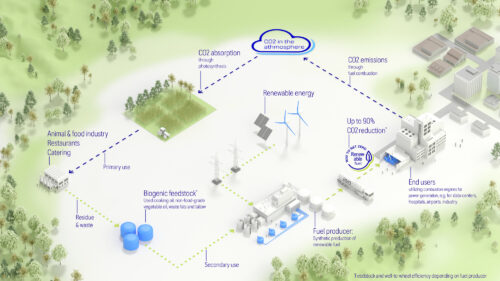Achievements in Zero Energy
Zero energy, zero carbon at different scales, in different climates.
AEI employs its deep design expertise and suite of energy modeling tools to more quickly and reliably envision the interaction of climate, program, occupants, building systems, and district energy systems. Focusing exploration at each stage of the design process, these tools provide the owner and the design team with ever-greater accuracy yielding insights on how design characteristics and design alternatives will affect energy use, carbon emissions and cost.
Here are five zero energy and zero energy-ready projects at different scales, in different locations, for impassioned owners of in a variety of markets. The tools and processes brought to bear in achieving their exceptional performance are common to them all.
Stanford Energy Systems Innovation
The Stanford Energy Center (peak load of 28,000-ton cooling, 250 MMBtu/hr heating) uses heat recovery chillers that – along with standard chillers and gas-fired hot water generators for peak load requirements – capitalize on daily heating and cooling overlap to heat the campus and university hospital with recovered energy.
Two million gallons of hot water and ten million gallons of chilled water thermal energy storage accommodate high demand periods. The campus conversion from steam to hot water includes district energy heat exchanger stations at nearly 200 buildings and over 20 miles of a direct buried low-loss hot water piping system. As a beacon to the system it represents, the SESI operations building is designed to be zero energy, with on-site PV offsetting its operational energy and carbon.
California Air Resources Board, Southern California
The California Air Resources Board (CARB) is one of the most advanced and prominent vehicle emissions testing and research organizations in the world. On completion, its new building will be the nation’s largest zero energy facility. The nature of CARB’s research mission, regulating as-yet unregulated emissions constituents, demands high-performance precision laboratory environments to produce repeatable data and yet meet on-site ZE in the hot, dry climate of Riverside.
AEI developed performance modeling tools for rapid system concept testing, validating a suite of climate-responsive systems strategies improving by an additional 20% on the project RFP’s already aggressive energy use intensity (EUI) target with this all-electric, grid-harmonizing design. The building’s energy use will be offset by 3.75MW of photovoltaic (PV) panels on site. 1.5 MWh of battery storage will optimize electrical demand and utility costs under a net-metering agreement, especially important given the building process loads and over 100 EV charging stations on the project. A comprehensive approach to water conservation, collection, and reuse will contribute to a nearly 50% reduction in required potable water use.
Montana State University – Norm Asbjornson Hall
Norm Asbjornson Hall, leveraging a range of ground source heat pump technologies, is intended to consume no heat from their steam plant even during the course of Montana winters. The building harnesses the heat of the sun to warm intake air, powers itself with roof-top solar panels, and leverages passive lighting and ventilation to harness the cool, sunny climate. The ultra-low energy design positions this STEM engineering building as zero energy ready with initial phase of PV offsetting 14% of all building energy.
Norm Asbjornson Hall’s 104 geothermal boreholes (500 feet deep and 7 inches in diameter) store excess heat during colder periods, positioning the hall to be the start of a district energy interconnected exchange loop serving the many highly energy efficient buildings on the Montana State campus.
College of Lake County
The College of Lake County‘s new science and engineering building with laser, photonics, and renewable energy programs includes teaching labs, classrooms, offices, and support space. AEI energy modeling helped determine the most effective means to achieve substantial energy savings. With a projected EUI of 88 kbtu/sf, placing it in a zero-ready status, the building is expected to use 66% less energy than the ASHRAE 90.1-2007 baseline for an energy cost savings of 52%. The initial 56 kW PV array is anticipated to provide 61,000 kWh annually.
Expanding the College’s sustainability goals, an AEI-designed campus-wide geo-exchange system will provide heating and cooling to all campus buildings to further CLC decarbonization efforts. The initial phase includes primary infrastructure and eighty 500-foot deep boreholes, expandable to over 480 wells with an estimated 1500+ tons of heating and cooling capacity.
Green Technology Training and Enterprise Center (G-TTEC)
Combining established sustainable technologies in an effective holistic system of planning and design, the 11,000 sf Green Technology Training and Enterprise Center in semi-rural Plain, Wisconsin, may be the least expensive net zero-ready commercial building in the U.S., to date.
Significantly reducing energy loads through optimal building massing, a high-performance envelope, 1,800 hours/year of natural ventilation, and high-efficiency lighting and daylight harvesting made radiant heating and cooling and a 14-well geo-exchange field feasible in a climate that ranges from 93°F to -26°F.
This article originally appeared on Affiliated Engineers’ website. Affiliated Engineers is a CFE Media content partner.
Original content can be found at aeieng.com.
Do you have experience and expertise with the topics mentioned in this content? You should consider contributing to our CFE Media editorial team and getting the recognition you and your company deserve. Click here to start this process.


